- Home
- Jane Smiley
The Georges and the Jewels Page 11
The Georges and the Jewels Read online
Page 11
But when Mary A. had completed her response, the teacher just happened to get up and walk around to make sure we were all doing our work, as she sometimes did, and so there was a new challenge. Mary A. and Joan met this challenge by deciding to sharpen their pencils, which they were allowed to do without asking permission, and so they both got up, pretending not to be paying any attention to one another, and headed for the pencil sharpener next to the blackboard. As soon as Joan got up, I saw that Stella was fiddling with something, and then, before Joan even got to the pencil sharpener, I saw what it was—she had removed the cartridge from her fountain pen (black ink, because we were required to turn in final copies of our papers in black ink) and leaned over and set it on Joan’s desk chair.
Now Joan sharpened her pencil, exchanged her note with Mary A., and headed back to her seat. I was looking at the cartridge. I was sure she would see it—it was sitting right there as big as anything. But she was too busy making faces across the room at Mary A. and Linda, and so she turned around, twisted her body, and sat right on it. And then she slid around to get more comfortable. I looked at Stella, who was smiling and reading her history book. Stella didn’t look at me. Everyone else was studying hard. Even Debbie had her nose so deep in her book that I couldn’t see it. I didn’t know whether Stella knew that I had seen the cartridge.
Joan wasn’t wearing a white skirt, but it wasn’t black, either—she had a new mossy green wool skirt with pleats that were sewn to about four inches below the waist, and then flared out. It was pretty, and her sweater matched it. She also had on a white blouse. When the bell rang and she stood up, she had a long streak of black ink running across her skirt and then down. When she reached around to smooth her skirt after standing up, she got the ink on her fingers and then on her sweater. It was then she noticed the ink. She screamed and started cursing. She said the G word attached to the D word, and more than once. Very bad. Stella made no sound or gesture. She didn’t even ask what happened. She just wandered out of the room with the boys. The boys didn’t care, but all the girls except Debbie, who was already out the door, gathered around Joan and looked at her skirt, her hand, and her sweater. “Oh, it’s ruined!” cried Joan.
Linda found the ink cartridge under the desk chair. The desk chair had a streak on it, too. Joan insisted that someone had left it there on purpose, but the other girls didn’t believe this—any one of the boys, they thought, could have forgotten that he dropped the ink cartridge or dropped it without realizing it. It could have been there for hours or all day.
I was the only one who knew that Stella had put it there on purpose.
After school I was waiting for the bus with Gloria, who had been sitting in her usual seat in the front of the study hall, under the gaze of the teacher, and so didn’t know anything about the skirt incident. She and I were watching the other girls. Stella had, once again, gotten picked up by her mom. Gloria said, “I don’t see why it’s such a big deal. She got ink on her skirt, so what? Her mom will take it to the cleaners.”
I said, “I guess it was a new skirt.”
“Stella said that. She said they were talking about it at lunch, that it was a new skirt from some store in San Francisco.”
“She heard that?”
“She said she did.”
I said, “You know, I—” but I said it quietly, because I wasn’t sure how to tell Gloria about Stella. Gloria didn’t even hear me. She exclaimed, “Forget them! Can I come see the colt this weekend? I saved him some apples.”
“He doesn’t eat treats yet.”
“Well, I’ll give them to the others, then. But we can do something after. I’ll get Mom to bring me out for a while, then you can get your mom to let us go someplace for the afternoon.”
“I’ll ask.”
So, I didn’t say a word about what I’d seen, but all the way home on the bus, I thought about how mean Stella had been. I wondered if the ink on the skirt equaled the pen tear in the stocking. I also wondered when Joan was going to realize that Stella had done it on purpose and whether Stella wanted Joan to know that. After all, what good was it, in terms of the war, if Joan thought it was an accident?
Chapter 12
ON WEDNESDAY AFTER SCHOOL, I CHANGED INTO MY RIDING clothes right away and was on Black George when Daddy and Mom left for the church. As soon as they turned right out of the driveway, I jumped off him and put him back in the gelding corral—he was a willing horse, and Daddy always said, “Some days, ten good minutes is enough.”
I still didn’t quite know what was going on about Jem Jarrow, but I had some suspicions—Danny worked for Jake Morrisson, Jake Morrisson knew Jem Jarrow, Jake Morrisson and Mom had had a long talk, Mom had hurried Daddy out to the church, telling him something that I didn’t understand about the chairs, and maybe the windows needed cleaning, too, since no one had touched them since the fall, and cleanliness was next to godliness, and when Daddy said, “Why today?” Mom said, “Next week is Mrs. Larkin and Mrs. Lodge doing the chairs, and after that the Greeleys, so if we don’t do it, it won’t get done.” They packed up the Windex and some rags and off they went.
Jem Jarrow’s truck turned in the driveway moments later. I ran to meet it.
Jem Jarrow wasn’t much of a smiler, but he had a cheerful face. When he got out, I saw again that he was small—maybe half a head taller than I was at the most—I had forgotten that and been thinking of him as Daddy’s size. And you could see the horizon between his knees, as Daddy would say. Being bowlegged was, according to Daddy, the first sign of a horseman, because to get that way, you had to fit your legs around the horse from an early age. Jem said, “How do, Abby. Been well?”
And I said, “Yes, sir, how about you?”
“Can’t complain,” said Jem Jarrow.
That was it for the formalities. I followed him out to the gelding corral. The horses all looked up at once and stared right at him. Just as before, but for not quite as long a time, he stopped and watched them.
I said, “What are you looking for?”
“How they are. How they feel about each other.”
“What do you make of that?”
“Well, first off, I’m just curious. Always been curious. When I was in school, they told me not to ask so many questions, so I learned to keep my mouth shut and my eyes peeled. But more than that, right now, I wonder how this gelding we’re working with gets along with the others. I see both this time and the last time that he’s quick to take offense. That other one, the dark one, he’s more easygoing, but he’s more athletic, too. So, all in all, I suspect that the dark one—”
“That’s Black George.”
“—is the boss of the three of them, but he spends less time thinking about it than our friend.”
“Some kids are just cool.”
“That’s right.”
I laughed.
By now, we were standing at the gate, and Jem opened it and walked in. The first thing he did was wave the horses away and walk to the center of the corral, where he got them going around him again. They all did it more smoothly than the last time, to the right and then to the left and then back to the right. By the time he let them turn in toward him, they were one hundred percent relaxed, as far as I could tell.
Ornery George didn’t act as though he knew this session was about him. He was just curious and sniffing, like the others, until Jem put his hand on his neck, and then the horse’s ears flicked backward and his eyes sort of narrowed. But Jem acted as if he didn’t notice this and put his hand on the bridge of George’s nose, about halfway between the nostrils and the eyes. They stood there. Jem didn’t pet George as I would have done. He just stood there with his right hand on George’s neck and his left hand over the bridge of George’s nose. After some time, George’s neck loosened and his head dropped. Just then, Jem gave him a pat on the neck. While George’s head was still lowered, Jem pulled up the headstall and fastened it together. Then he turned and walked briskly back to the gate. George followe
d him. George had a look on his face that wasn’t willingness, I would say, but also not grumpiness. More than anything, it was curiosity. I shooed the other horses back and held open the gate. Man and horse walked through and headed to the arena.
Jem and George went about a third of the way into the arena, to the most open spot, and at a wave of Jem’s hand, George started trotting around him in a tight circle, tighter than in the corral, just right around Jem. Since the other horses weren’t with him, though, he must have decided that it wasn’t much fun, because he kept trying to stop. Jem wouldn’t let him. Every time he tried to stop, Jem waved him forward again with his free hand while lifting the hand that was holding the rope. Jem wasn’t going to let George stop until he did something, and what that thing was, I saw a moment later, was that dance step—cross his inside hind leg over the outside hind leg and bring his hindquarters around to the outside. When he did that, Jem let him stop, then he waved him in the other direction, in the same tight circle. Once again, he was reluctant to move and awkward until he crossed those hind legs, inside to outside. At the same time as the legs crossed, George’s head and neck dropped and relaxed, and his progress around the circle was easier.
I climbed up on the fence. I was glad I had my hat on, because it was a sunny afternoon, nice and warm across the top of my back. I could see from there that the geldings and the mares had decided that whatever was going on didn’t concern them, and so they had gone back to eating their hay, but Jack, in his pen, was all eyes. He stood with his chest against the fence and his ears pricked. A couple of times when George changed direction, Jack snorted and humped his back. It was cute.
After a couple of minutes, Jem let George stop trotting around him. Now he stepped up right beside him again, where he was standing, and he used that lifting motion on the rope. George had to step his hind end over as soon as he felt the upward pressure, but I have to say that he didn’t learn this smoothly, or without protest. Especially when he was stepping to the left, he tried more than once to pull his head away or simply to stiffen and wait until Jem Jarrow would give up.
But Jem Jarrow was a patient man. That was the complete difference between him and Uncle Luke. You had the feeling that Jem would stand there all day with the rope lifted, waiting for the horse to put two and two or, for that matter, one and one together. If he did, he got a pat. If he didn’t, he didn’t get anything—they just waited. Uncle Luke, I knew, and maybe even Daddy, would have said something, or batted the animal, or given him a push. I could see that Jem Jarrow wanted George to think of this thing himself, to not be told every time what to do.
They must have worked on this for five or ten minutes. Another thing they did was Jem just put his hand over the bridge of George’s nose and pulled it around so his neck was curved to the left and down. A couple of times, Jem released his hold, and George’s head popped back to the front, as if on a spring. But then he did the right thing—he just relaxed and kept his head turned even after Jem had taken away his hand. It was then that George got the pat.
I shouted, “What’s that for?”
Jem said, “The horse doesn’t know how to soften.”
“Is that because people were mean to him?”
“Don’t know.”
“But—”
Jem stopped working the horse for a moment and waved me over to him. I jumped off the fence. The sand in the arena was moist and springy. Perfect, really. When I got to the two of them, Jem didn’t do what I thought he would do, which was to ask me if people had been mean to the horse, he said, “Here’s how I think of it, Abby. When the horse knows how to soften and go along and be happy doing it, then it won’t matter to him what happened before, and if it doesn’t matter to him, then it doesn’t matter to me, either.”
He handed me the rope.
I was to stand just to the side of George’s neck with my hand up by the halter and the rope coming up through it like a rein. At the same time that I lifted the rope, twisting the horse’s head and neck upward a bit, I was to put my other hand on George’s shoulder about halfway up to the withers and push steadily, but not hard. As soon as I felt George’s shoulder loosen and release, I was to stop everything and give him a little pat. To be frank, I didn’t see the point of this, but I did it three times and then a fourth. Each time, I felt George’s body start out stiff and then soften up. Jem said, “See all these muscles, from the chest to the tail? All along the shoulder and the ribs and the flanks? And then this other set, all down his back and over his croup?” His hand feathered along George’s spine for a moment. “If all those muscles are loose, he’ll be easy to ride and he’ll enjoy himself. If they’re all tight, he’ll be hard to ride and dangerous, too, because even if he doesn’t go against you, his balance won’t be good, and his mind won’t be on what you want him to do. He’ll be looking for a reason to rebel, or to spook, or to stumble.”
“How can he look for a reason to stumble?”
“If his body is stiff, he won’t pick up his feet very well, and so a little something on the ground that he would be aware of if he were supple will cause him to stumble.”
He showed me how to get George to come around me, and then I set myself up so I could feel the other side tense and soften. He said, “When he steps his back feet under and across, he has to use all those muscles I was telling you about, especially the back muscles. It’s easier to use them if they’re supple, not stiff, so he learns to soften them when you ask, because he really wants to do things the easy way. And it’s actually easier for him to get along with you and do what you say and not buck you off, but you have to show him how to do it before he knows that.”
He took the rope back from me and went right in front of George, maybe three feet out. He said, “Here’s another little test.” He raised both his hands, both his index fingers, and waved them at George, as if to say, Naughty, naughty. But what he wanted George to do was step back. George wasn’t sure that he himself wanted to step back, so he leaned back and then leaned farther back, without moving his feet. His ears were out to either side and a little back, what Daddy and I called “I can’t hear you” ears. When Jem put his hands down, George stood up straight again. This time, Jem raised his left hand and then, with his right hand down low, used the lead rope to suddenly pop George under the chin. George threw up his head and stepped back. Jem patted him on the forehead. Then they did it again. It took three times, but on the fourth time, Jem lifted his fingers, and George stepped back one step without being popped under the chin. Jem said, “Horses don’t like to back up, generally. There’s no eyes back there.”
I laughed.
“But when he backs up, once again, he’s got to be soft all over to do it. So it’s a good test. I don’t get on without giving him that little test. If he won’t back up, then we work a little more.”
“Don’t you ever get on a horse without giving him tests?”
“Not unless we’re good friends of long standing.”
The next thing Jem did was hand me George’s rope and go get the tack. I just stood there, because I didn’t want to do the wrong thing, and I noticed that George just stood there, too, which was an accomplishment for Ornery George. I gave him a little pat on the nose. I couldn’t help myself.
Jem was small, but he carried his saddle like every cowboy I’d ever seen, over his hip, with the cinch folded over the seat of the saddle and the stirrups hanging. A western saddle is heavy. Daddy always carried his on one side one day and on the other side the next day so as to exercise his back evenly. When Jem swung the saddle up on George, George stepped away. Jem took it off, swung it up again. George stepped away. Jem took it off, swung it up again. George must have seen that resistance was futile, and so the last time, he stood there. Jem went around and arranged the cinch, then he came around again and gestured for me to hand him the lead rope. When I gave it to him, he laid it over his forearm. I saw that he wasn’t going to make George do anything at all, but instead, he was going to have him stan
d there of his own accord while Jem was going about his business. After the saddle was cinched up, Jem asked George to make some tight circles again, this time with the cinch tight and the stirrups flapping. At first, it was hard for George—he was stiff and kind of mad, but then he got used to it. I ran to get the bridle.
When I passed Jack, he whinnied at me, and I stopped to give him a pat on the neck. His neck was almost shed out, and his coat was dark and shiny.
Jem went about getting George to take the bit in the same way he had done with the halter—he put his hand over the bridge of George’s nose. George was to bend his neck and drop his head and relax so that Jem could slip the bit into his mouth and pull the crown piece over his ears. It took a minute or two to get this done, but not as long as before. I said, “Is he smart?”
“All horses are smart. How else would they be able to work for a living? They’ve got jobs to do, and most do them.”
“Daddy says they only understand the carrot or the stick.”
Jem laughed. He said, “Generally, I don’t use either a carrot or a stick. Seems like most horses remember the stick better than they remember the carrot.”
“What do you use, then?”

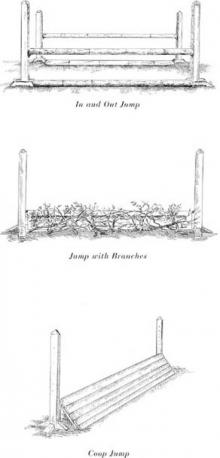 The Georges and the Jewels
The Georges and the Jewels Pie in the Sky: Book Four of the Horses of Oak Valley Ranch
Pie in the Sky: Book Four of the Horses of Oak Valley Ranch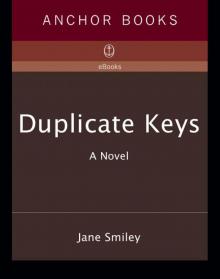 Duplicate Keys
Duplicate Keys Charles Dickens
Charles Dickens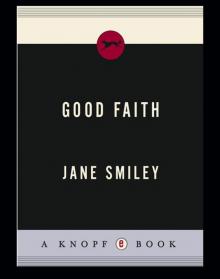 Good Faith
Good Faith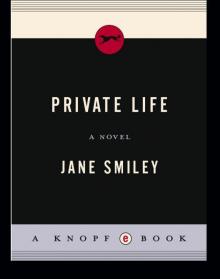 Private Life
Private Life A Thousand Acres: A Novel
A Thousand Acres: A Novel The Greenlanders
The Greenlanders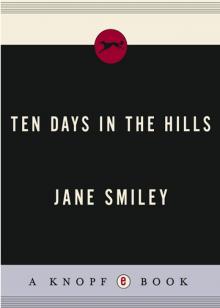 Ten Days in the Hills
Ten Days in the Hills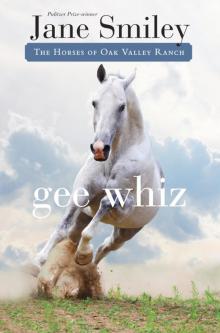 Gee Whiz: Book Five of the Horses of Oak Valley Ranch
Gee Whiz: Book Five of the Horses of Oak Valley Ranch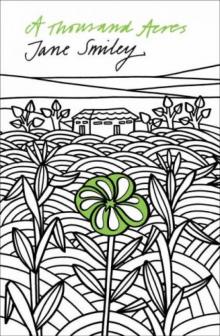 A Thousand Acres
A Thousand Acres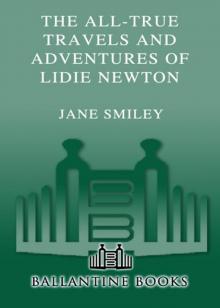 The All-True Travels and Adventures of Lidie Newton
The All-True Travels and Adventures of Lidie Newton Ordinary Love and Good Will
Ordinary Love and Good Will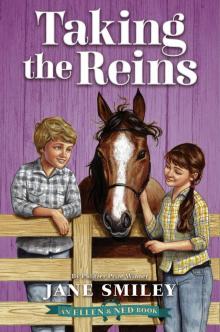 Taking the Reins (An Ellen & Ned Book)
Taking the Reins (An Ellen & Ned Book) The Man Who Invented the Computer
The Man Who Invented the Computer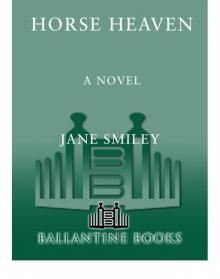 Horse Heaven
Horse Heaven The Age of Grief
The Age of Grief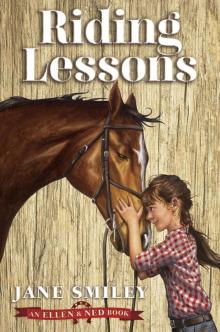 Riding Lessons
Riding Lessons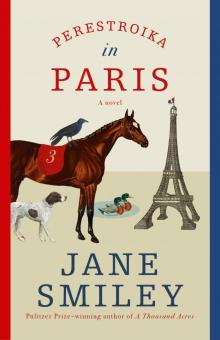 Perestroika in Paris
Perestroika in Paris A Good Horse: Book Two of the Horses of Oak Valley Ranch
A Good Horse: Book Two of the Horses of Oak Valley Ranch Saddles & Secrets (An Ellen & Ned Book)
Saddles & Secrets (An Ellen & Ned Book)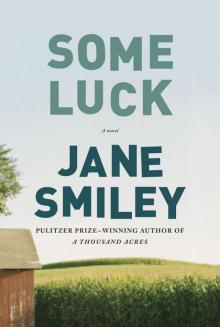 Some Luck: A Novel
Some Luck: A Novel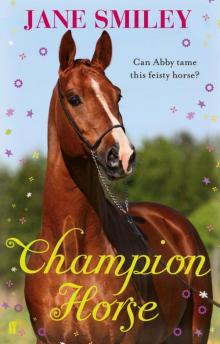 Champion Horse
Champion Horse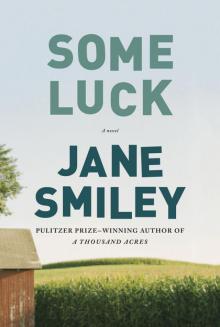 Some Luck
Some Luck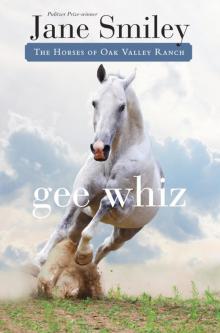 Gee Whiz
Gee Whiz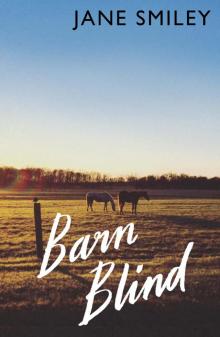 Barn Blind
Barn Blind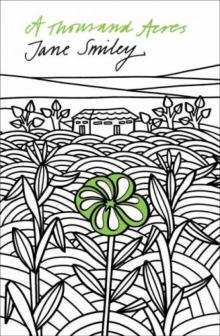 A Thousand Acres (1992 Pulitzer Prize)
A Thousand Acres (1992 Pulitzer Prize) Pie in the Sky
Pie in the Sky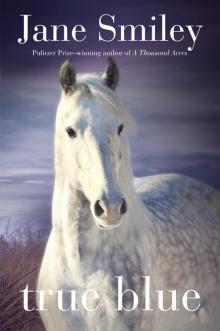 True Blue
True Blue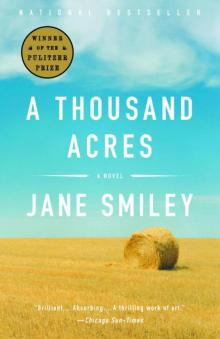 A Thousand Acres_A Novel
A Thousand Acres_A Novel A Good Horse
A Good Horse